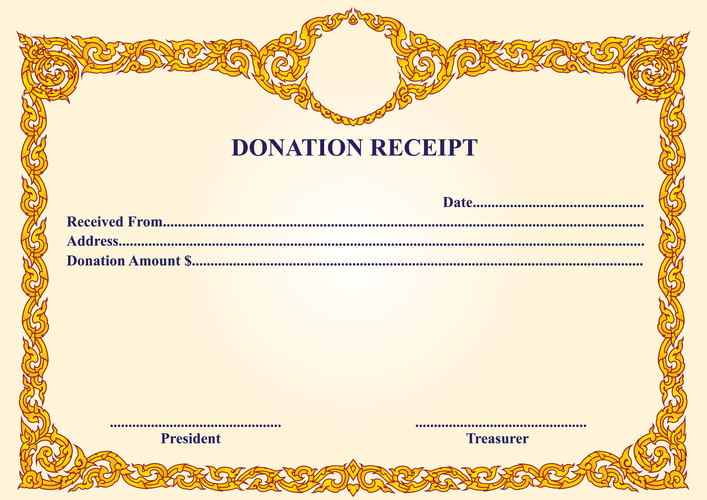
In this blog post, we’ll explore the intricacies of donating stock to charity, including how it works, who can benefit, and key pitfalls to avoid. It’s important to be aware of the different types of donations that you may encounter and know how to account for them accordingly. Additionally, make sure to regularly review your procedures and make changes when necessary to ensure accuracy. All of these tips come together to create an optimized donation management strategy. A note on unreimbursed out-of-pocket expenses – Form 990 explicitly forbids including unreimbursed out-of-pocket expenses, even if they are for tangible goods.
What are grants and restricted funds?
Stock gifts bring unique benefits and outsized impacts, so getting your fundraising process right can pay dividends quickly. We take care of the immediate liquidation of the gift Online Accounting and deposit it directly into your linked bank account while providing real time donor transparency and all donation receipts. Today, however, accepting stocks from donors doesn’t have to be a burden to your organization. The good news is that modern technology now offers an easy, stream lined alternative to the big bank methods of the past.
Mastering Contribution Accounting: Essential Strategies for Recording and Recognizing Nonprofit Donations
In addition, the determination of the fair value of publicity is highly subjective. Thus, any allocation between exchange and contribution revenue would provide little benefit. The Charity CFO is your best option for outsourced accounting, from bookkeeping and financial statements to accounting for in-kind donations. These in-kind gifts can help your nonprofit get the resources it needs to carry out programs without constantly hounding your donors for cash. Some people are more likely nonprofit accounting for stock donations to give if they know that their donation will go directly to helping others, rather than paying overhead costs or admin salaries.

Nonprofits, Are You Aware of Your 990T UBIT Filing Requirements?

Stock donations are outright gifts, so must be reported as soon as the assets are transferred to your organization. Whether intentional or not, failure to follow the rules could result in financial penalties as well as a loss of reputation and trust in the community. Once you receive a donation of stock, a thank you and acknowledgment letter should be sent to the donor. Not only is this the right thing to do, but it’s also required by the IRS for any gift over $250.
How accounting for in-kind gifts works
- But if you hold appreciated stock, donating your shares to charity can amplify the potential benefits for both parties.
- A corresponding credit is made to a contribution revenue account to acknowledge the inflow of resources.
- Creating a policy is like making a decision when you have time to be thoughtful, to do adequate research, and to consult colleagues and other professionals rather than making decisions in haste as circumstances arise.
- When a donation of stock is received, an acknowledgment letter should be sent to the donor.
- Assets received in a conditional contribution should be accounted for as a refundable advance until the conditions have been substantially met or explicitly waived by the donor.
These may be in the form of cash, goods, or services and are typically given by individuals, corporations, foundations, or government entities. In this article, we will focus exclusively on how to recognize unconditional contributions. As a nonprofit organization, it is incredibly important to ensure that the funds received from donors are being used in the way they intended.
See Financial Statements Through Your Accountant’s Eyes!

Thus, they can receive a tax write-off at the market value of the stock upon donation—regardless of what they bought the stock for. Sometimes, the resulting tax deduction can even be more https://www.bookstime.com/articles/cost-of-debt than what they originally paid! These donation accounts and tracking helps the organizations maintain their 503 crucial statuses.

It pays no tax if it sells at a profit and gets no offset if it sells at a loss. There can be a lot of value in diversifying your revenue streams in this way, especially in today’s turbulent economy. Valuation techniques, such as market, cost, or income approaches, are used depending on the asset’s nature. For example, the fair value of donated securities might be based on the quoted market price on the donation date. The cost approach evaluates what it would cost to replace the asset’s service capacity and is suitable for specialized donations, like custom-made equipment.
- This approach ensures that the valuation reflects the most accurate and relevant market data.
- Contributions made shall be measured at the fair values of the assets given or, if made in the form of a settlement or cancellation of a donee’s liabilities, at the fair value of the liabilities cancelled.
- On the other hand, net assets without restrictions are those that have no specific instructions from the donor.
- This information can be useful for management purposes and for grant applications.
- The first step in this process involves recognizing the fair market value of the donated stock on the date of the donation.
- FastFund Online software is the tool that nonprofit organizations and small governmental agencies need to triumph over donation management challenges.
If the stock was used to pay a pledge that has already been entered, you can skip this step. You should calculate the stocks available to the general public by formulating the average high and low price of the stock on the same day. If you receive an amount of $10,000 or higher in closely held stock, then you should add a fair market price from an independent appraiser. Following are the reporting requirements you need to fulfill when dealing with stock donations according to the IRS. The IRS, also called the International Revenue Service, oversees the stock donation matters.
Recognition of Donated Assets
It may seem hard to distinguish between policy vs. procedure, but think of one as intent and the other as the mechanics of carrying out the intent. Policies should be clearly written to make the accountability intent apparent. Now you will have a balance sheet with an Endowment Investment Asset of $10,000 and a Restricted Endowment Equity account of $10,000. If estimated to be greater than $10,000, the Internal Revenue Service requires that the donor obtain a value from a qualified independent appraiser.